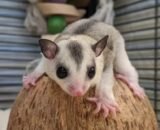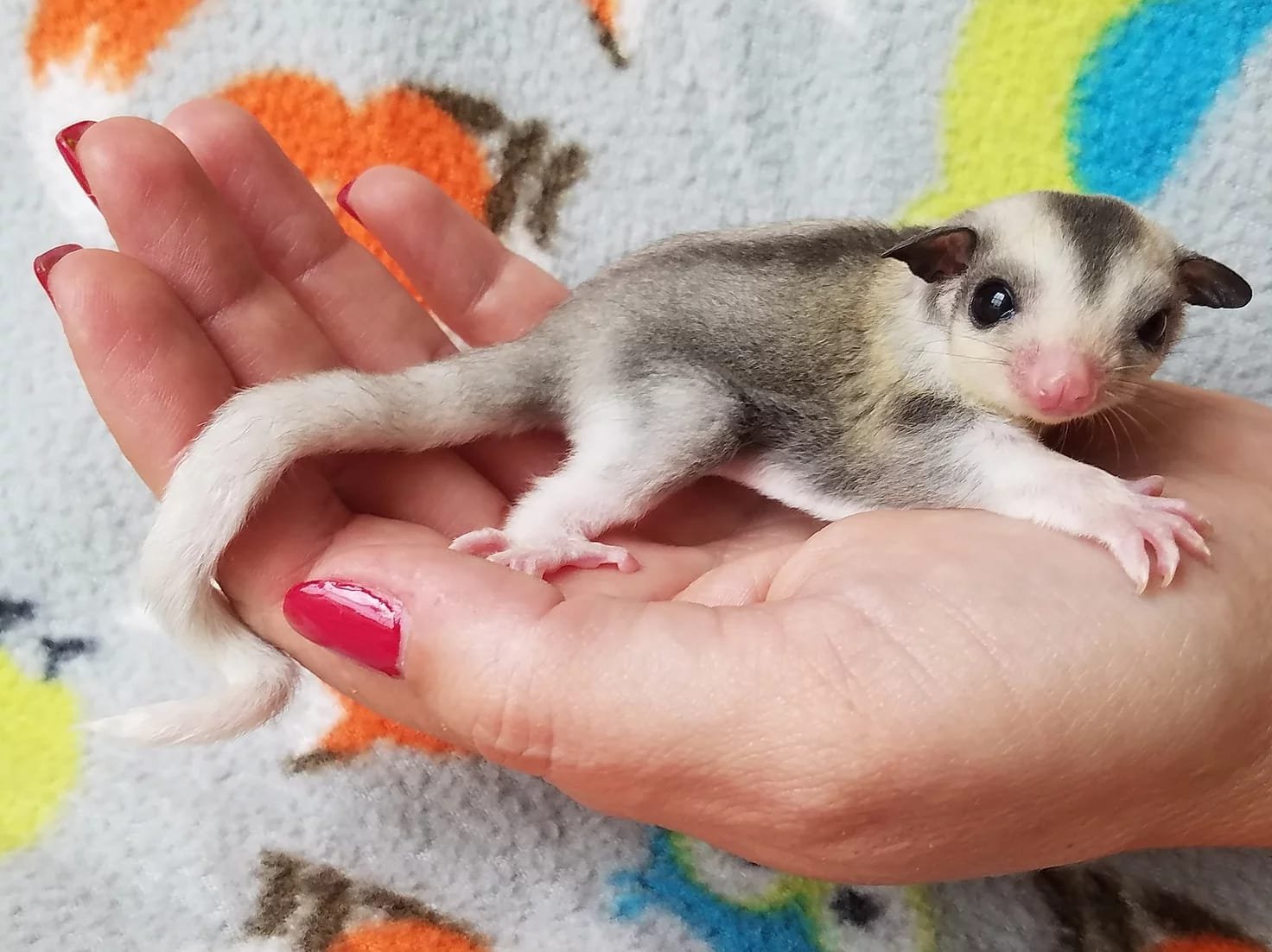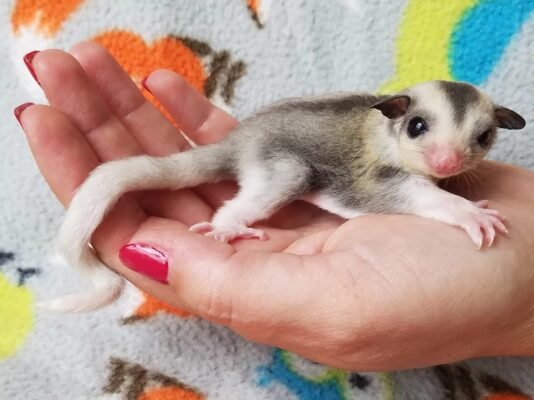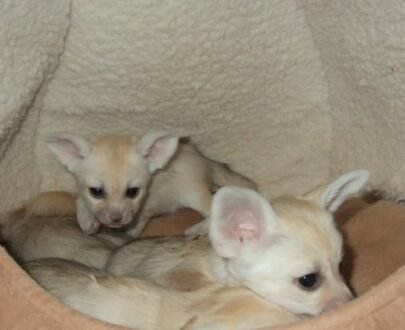- You have no items in your shopping cart
- Subtotal: $0.00
MALE SUGAR GLIDER
$530.00
MALE SUGAR GLIDER
Delving Deeper into the World of the Male Sugar Glider
Male sugar gliders, though not as involved in raising young as females, play a significant role in the social dynamics and well-being of their colonies. Here’s a closer look at these intriguing gliders:
Appearance:
- Mirror, Mirror: Males generally resemble females in size and overall appearance. They boast a squirrel-like body with soft, grey or brown gliding fur accented by black stripes. The signature feature of both sexes is the patagium, a furry membrane stretching from wrist to ankle, allowing them to glide effortlessly through the air.
- Spot the Difference: Distinguishing males from females can be tricky. In some species, males might be slightly larger, but the most reliable indicator is often subtle. Males possess a scent gland located on their forehead, appearing as a small bald spot. This gland is absent in females.
The Scent Gland:
- Marking Their Turf: This forehead gland plays a vital role in communication and territory marking. Males use scent markings to advertise their presence to females and potentially establish dominance over other males. where to buy a sugar glider
Social Life:
- Lone Wanderers: Unlike the family-oriented females, males tend to be solitary creatures outside of mating season. They have overlapping territories with multiple females and primarily interact with them during breeding. This solitary lifestyle minimizes competition for food resources within the colony.
- Dominance Dynamics: In some colonies, male sugar gliders may exhibit dominance hierarchies. Larger and older males might have priority access to mates and preferred feeding areas. This hierarchy can be established through scent marking, displays of dominance, or occasional altercations.
Playboys, Not Fathers:
- Breeding Business: Similar to females, males can breed throughout the year, although breeding is more frequent during specific seasons depending on location. During this time, they may engage in courtship behaviors like scent marking, vocalizations, and impressive gliding displays to attract females.
- Absent Fathers: After mating, the male plays no role in raising the young. The responsibility of nurturing and caring for the joeys falls solely on the females and other females within the colony.
Importance to the Colony:
- Genetic Diversity: Despite not being involved in parental care, male sugar gliders are crucial for ensuring genetic diversity within the colony. Competition among males during breeding season can lead to stronger genes being passed on to the next generation.
Threats and Conservation:
- Habitat Loss: Both male and female sugar gliders face the threat of habitat loss due to deforestation. Protecting their rainforest homes is critical for their survival. small pets for sale
- Conservation Efforts: Understanding the roles of both sexes is vital for sugar glider conservation. Sustainable practices and habitat preservation are essential to ensure the well-being of these fascinating creatures.
By appreciating the unique characteristics and behaviors of male sugar gliders, we gain a deeper understanding of their place within the intricate social structure of their colonies. sugar glider near me
Categories: Marsupial, Nocturnal, Small Pets, Sugar Glider For Sale
Tags: african pygmy hedgehog for sale, baby hedgehog, baby hedgehog adoption, baby hedgehog as pets, baby hedgehog breeder near me, baby hedgehog breeders, baby hedgehog for sale, baby hedgehog price, baby sugar glider for sale near me, bush baby, Bush Baby for sale, buy sugar glider, Capuchin money for sale, chinchillas, chinchillas for sale, coatimundi, coatimundi for sale, domesticated fox for sale, Dwarf Goats, Dwarf Pig, exotic animals for sale, exotic animals for sale near me, exotic animals for sale online, Exotic pets for sale, exotic pets for sale in texas, exotic pets for sale near me, exotic pets for sale online, Farm Animals, Farm animals For Sale, female sugar gliders, fennec fox, fennec fox for adoption, Fennec Fox For Sale, fennec fox pet, finger monkey for sale, flying squirrels, flying squirrels for sale, fox for sale, Hedgehog For Sale, hedgehog for sale in california, hedgehog for sale in nj, hedgehog for sale in ohio, hedgehog for sale near me, hedgehog pet for sale, hedgehog pet for sale near me, hedgehog price, Hedgehogs, intact male sugar glider, kinkajou for sale, kinkajous, kinkajous for sale, Kune Kune Pig, lemurs, lemurs for sale, Long-eared hedgehog, MALE SUGAR GLIDER, male sugar glider for sale, marmoset monkey for sale, Marmosets For Sale, Marsupial, Mini Zebu, Monkeys for sale, Nigerian Dwarf Goats, pet monkey for sale, pet squirrel for sale, piglets, piglets for sale, prairie Dogs, prairie Dogs for sale, Primate, Pygmy Goats, pygmy marmoset for sale. marmoset, red fox for sale, red kangaroos, Red kangaroos for sale, Rodents, Ruffed Lemur, small animals for sale, small exotic pets for sale, Small Pets, small pets for sale, small pets for sale near me, squirrel for sale, sugar glider breeders, sugar glider breeders near me, sugar glider for sale, sugar glider for sale new jersey, sugar glider near me, sugar glider pet for sale, Sugar Gliders, sugar gliders for sale, where to buy a sugar glider, Zoological










Customer reviews
Reviews
There are no reviews yet.
Write a customer review